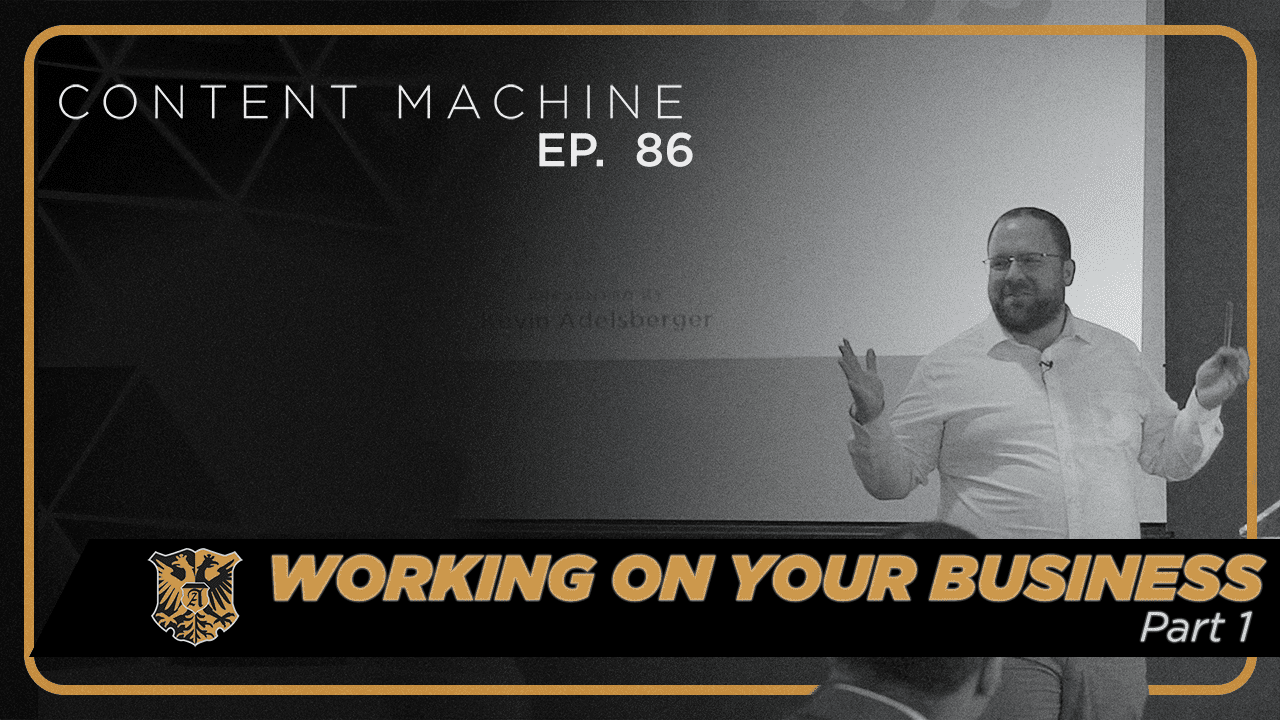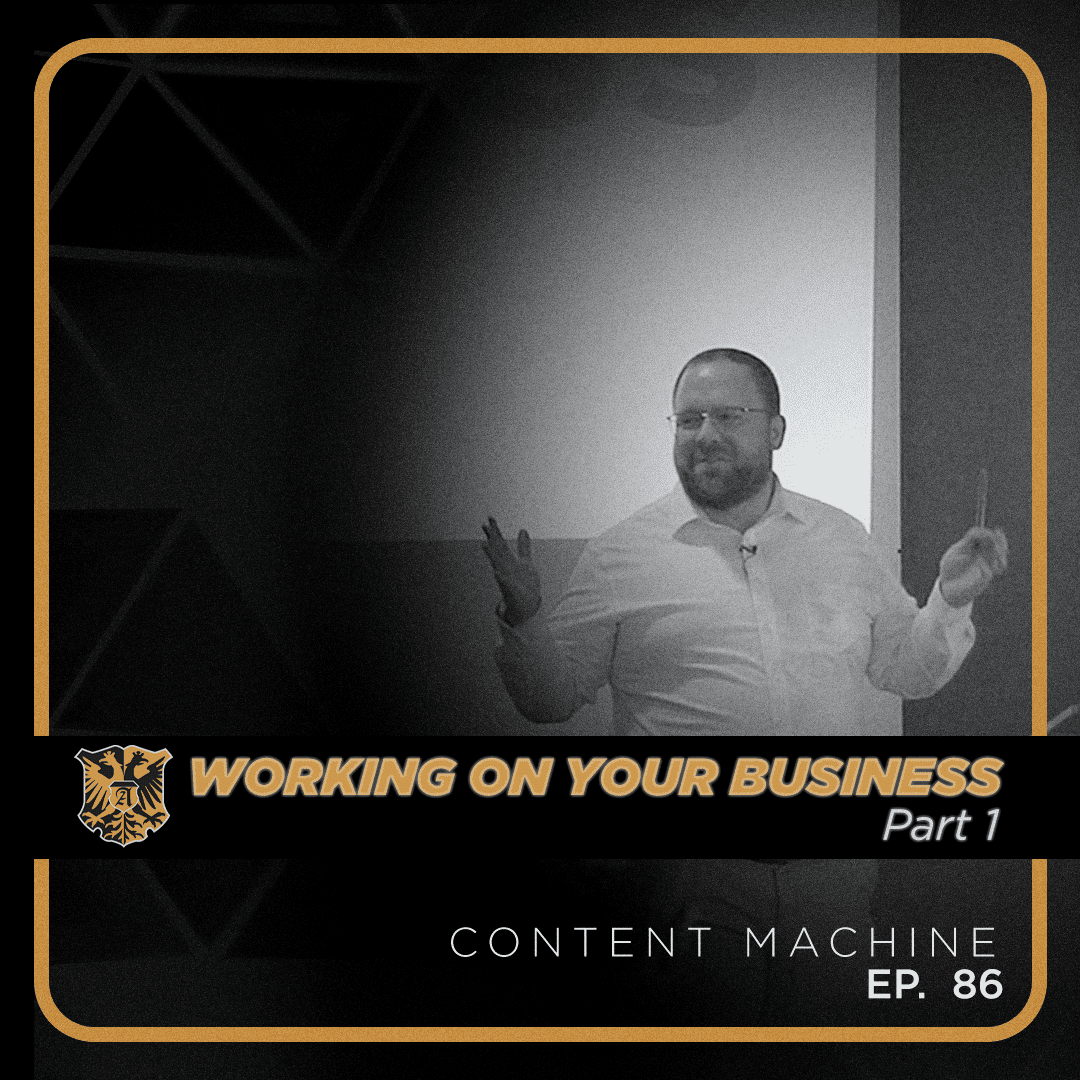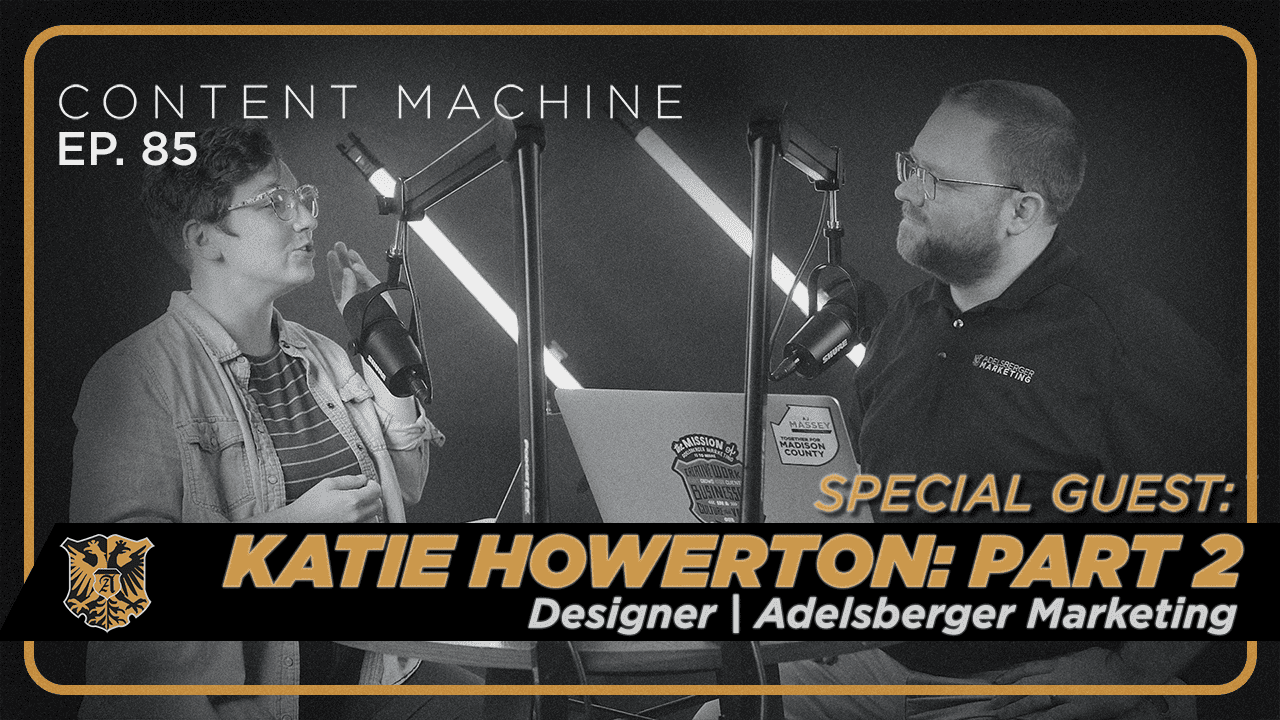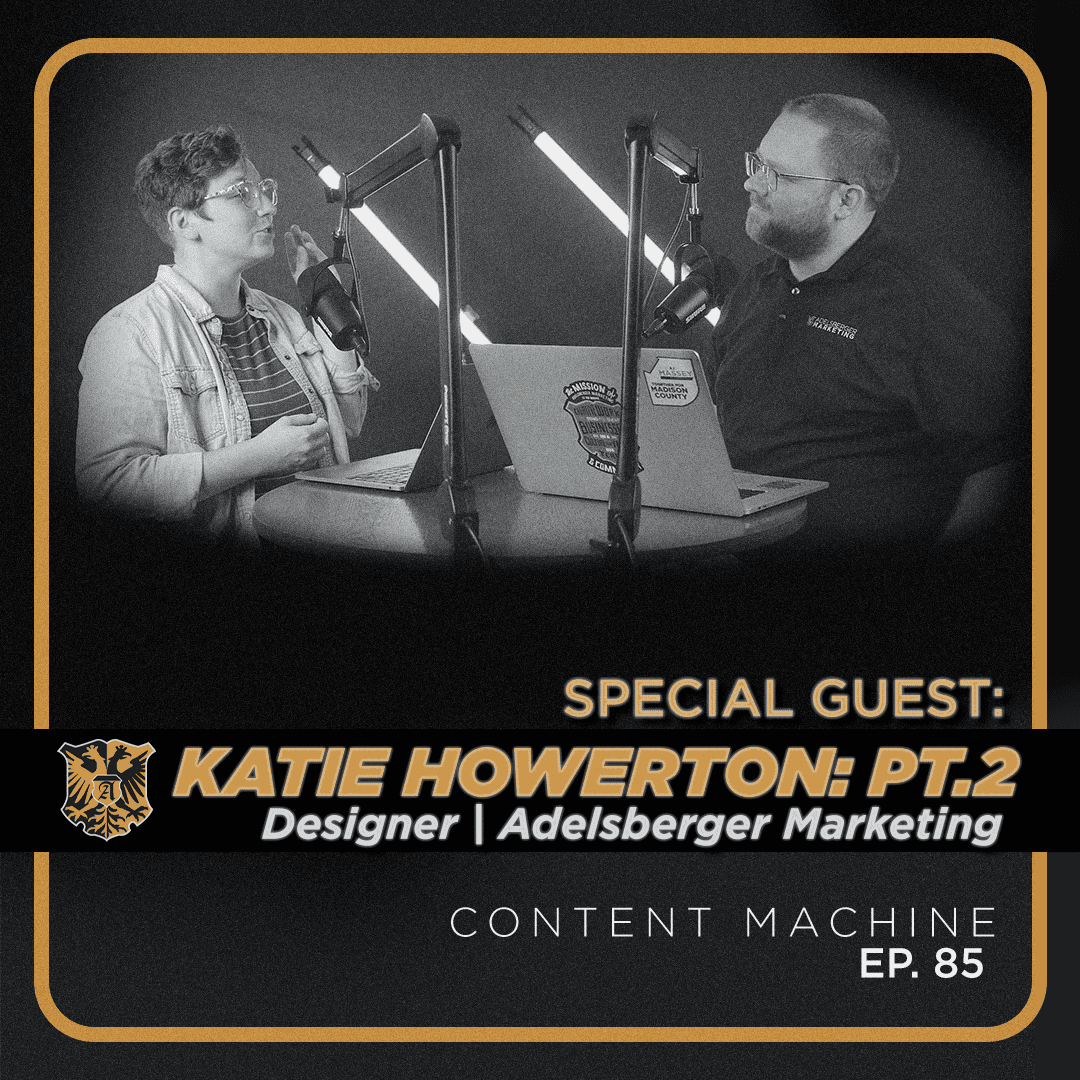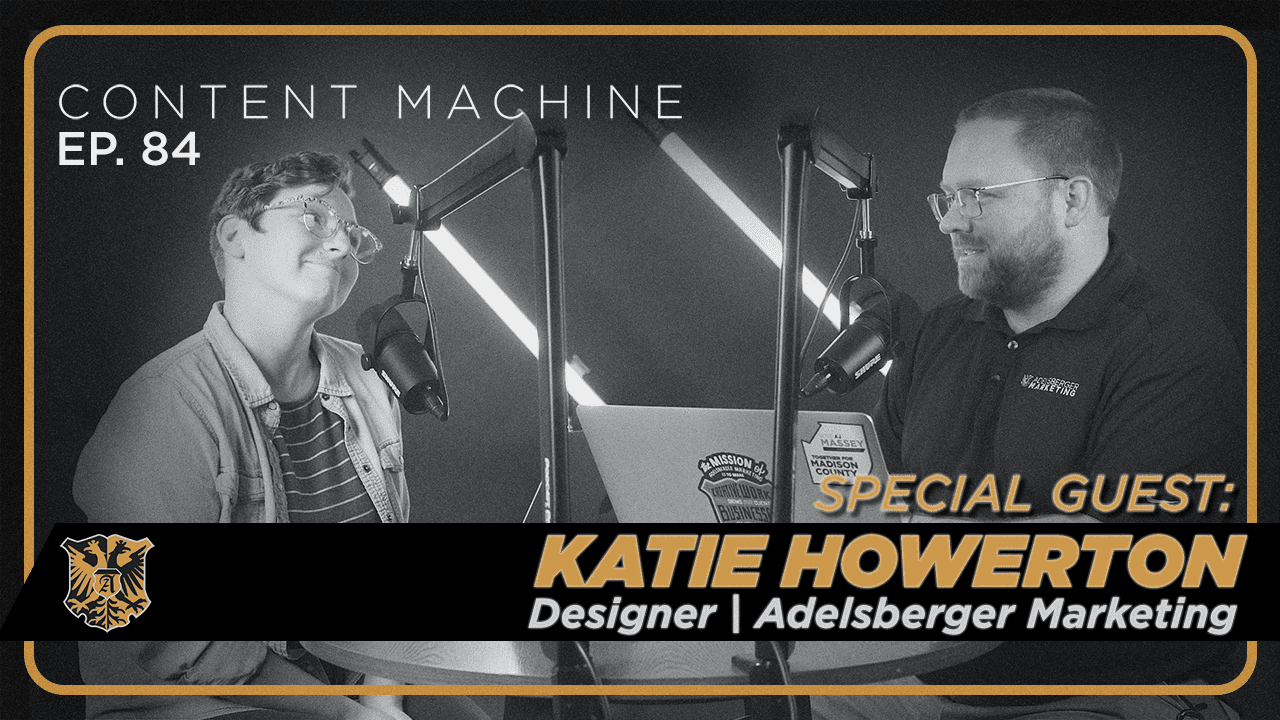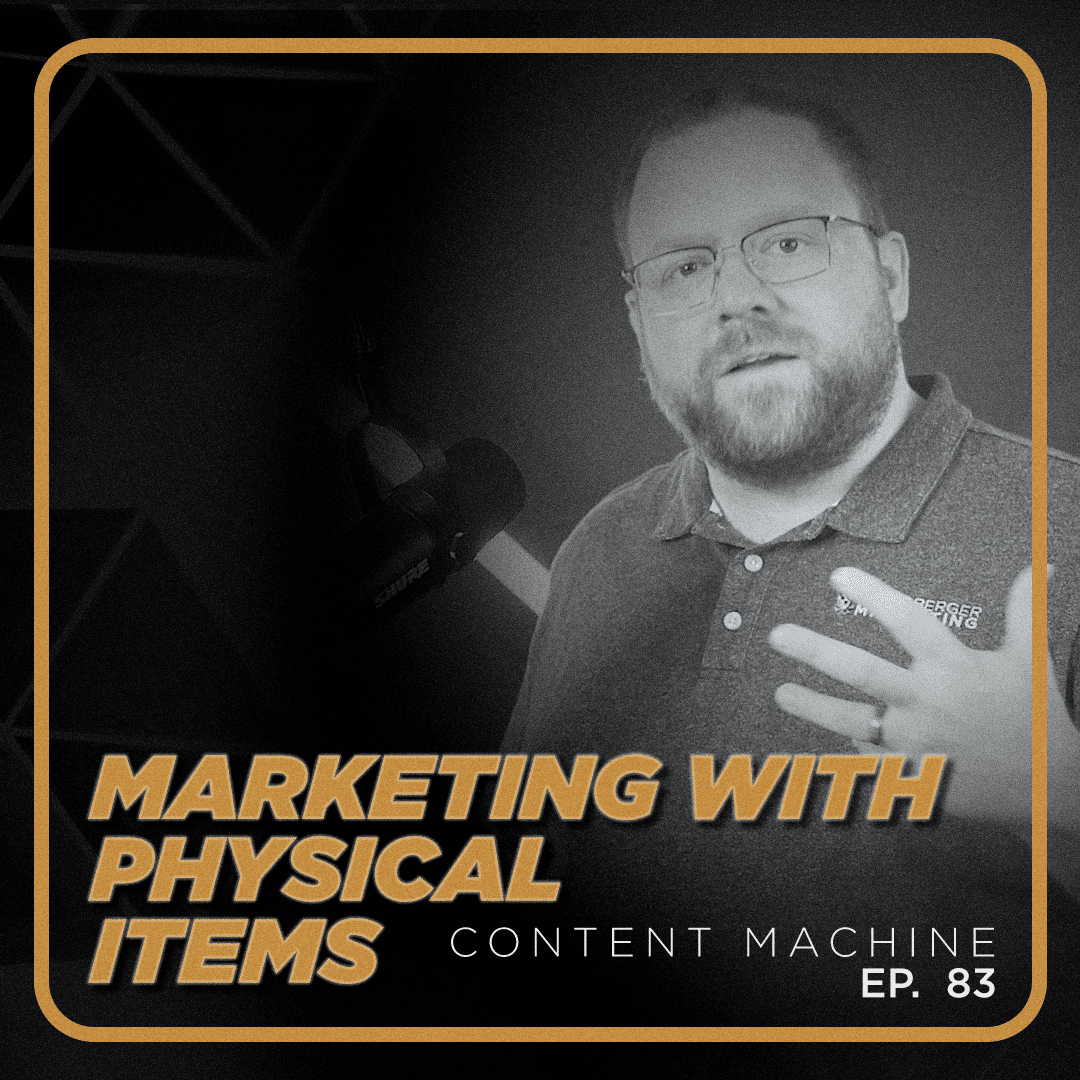Kevin
Welcome to the Content Machine podcast. This week, I’m joined by my friend William Donnell. William is going to be talking to us about his interesting career and how he’s grown and changed his business over the years. William, thanks for joining us today.
William
Yeah. Thanks, Kevin. I guess you’ll have to stay tuned to see if it’s actually interesting or not.
Kevin
That’s true, but I think it will be. Okay. William, you have a really interesting career path that really starts, in my knowledge with you being an Ag major at UT Martin.
William
True story.
Kevin
Why don’t you give us a little bit of background on that?
William
Yeah. I grew up on a farm. If anybody has been to Donald Century Farm, then that’s the farm I grew up on. I was always the geek sheep of the family. But my dad and my brother ran the farm after I graduated college. And then my dad still… My dad has passed away, but my brother still runs the farm, and then my mom also helps there, too. So growing up as being on the farm for generations and stuff, agriculture was just always a big part of my life. I thought that I wanted to do architecture landscaping. So went to UT Martin and got a degree and about that same time, though, my wife and I were dating at the time and started doing music. I do have a degree in agriculture, and I’ve never used it. As soon as we graduated from college, we just continued doing music full-time, which naturally led to doing website design and creative, and then from there. It’s a pretty natural progression. Most people start in a Ag, then they go to music, and then into a tech field. Same old story.
Kevin
The music to website stuff, What was that transition? I know you guys had some success in the music space. You were traveling around, making albums.
William
We made a living.
Kevin
We made a living.
Kevin
Yeah, absolutely. No, seriously. But then how did that transition into websites?
William
Sure. Maybe this is an advertisement for anyone to take electives in college that you’re interested in that are not part of your major. Getting my degree, I had to have a communications class. I could either take speech or I could take visual design, or I think it was desktop publishing. We were using Aldus PageMaker. I’m really dating myself there. You’ve probably never even heard of PageMaker. I’ve not heard of that. This is before Adobe, or maybe at the same time as Adobe, but before Adobe just dominated the landscape. I took a desktop publishing class. I’d always paid way too much attention to advertising and billboards and ads and stuff like that. Just always fascinated by really more that than maybe the fine art side of things. But I was just never a very talented, traditional writing, drawing artist. In that class, though, you could use computers. You could use the Command Z button to undo. If I could play around with something and then undo, let me try to make something different, undo, let me try it again, then I just really got an opportunity. I was like, Hey, this is a tool I can actually use, and I can find a way to be visually creative. My professor, who’s now the dean of the department, says that I am the best Ag student he’s ever had in his program. But I did get a taste of that. Then doing music full-time, the internet started to become a thing. This is around ’97, ’98, maybe something like that. And I realized, hey, we probably need some type of a website. So I didn’t know anyone local that did websites. I knew one person. There was only one person. That’s not true. Beth Rowe, locally, I knew her, and she was doing website stuff. And so I just thought, well, I don’t have any money to pay somebody to do a website. And so I’m just going to get some software and see if I can figure it out on my own. Got some software, used the tutorials that come with the macromedia stuff that was back then, and played around with flash, and played around with Photoshop and a bunch of stuff. And so built a website for our music ministry, and a local business said, Hey, I saw the website you did. That looks really good. Can you make one for my business? And I said, Absolutely, I can. And I knew that I really only had about half the knowledge which I needed to be able to complete that project. But I thought, Well, I didn’t know anything when I started my first project, so I’ll just just figure it out. And so did that project, learned a lot from it, obviously, and continued to do, I think, two more projects with her over the next five or seven or eight years or so. So that’s how I got into it, though.
Kevin
But your business didn’t stop at websites. You did websites mostly for the first how many years?
William
Yeah, websites have almost always I’ve been a part of the portfolio, I guess would be the fancy word, right? But one of the services we provided. But other types of marketing and stuff. So we’ve tried a lot of different things. I remember to begin with, any project that was remotely interesting and would help pay the bills, I would take it. And very early on, I got reconnected with a friend of mine from high school, Shane Aday, who was working for DeVilbiss, I think, locally, and was doing some freelance graphic design stuff. And so he and I got connected, and he was like, Man, I don’t mind doing the work, but I hate talking with customers. I was like, Hey, I could talk to customers! I could do that part! We started collaborating together. Then we did more print stuff because of Shane’s experience with that. That’s how that got started. But yeah, through the years, and I think we’re in our 22nd, 23rd year, I’ve tried lots of different things, and some of them worked, and some of them didn’t work as well because they weren’t profitable or because I didn’t feel like it was not an area that we wanted to continue to dig into, or I didn’t feel like we were really going to be good at this.
Kevin
Well, and I would say, based on just my recollection, because we’ve known each other for probably about 12 years now. Yeah, sounds right. Because I was actually a customer on a very small project at a nonprofit I worked at. And then we ended up working side by side at theCo for several years. So probably about eight years ago, I feel like the change started to accelerate greatly in what you guys were doing. You started moving more into user experience design and research. What is that? What is that? Yeah.
William
Yeah, sure. So first, I’ll explain what it is. So user experience is really thinking about any time a customer interacts with your product or organization. So if you think about if you’re going to go and get a box of Kleenex at Target, then the user experience is not just seeing the box on the shelf, pulling it off, putting in your cart and checking out. That’s not the whole user experience. It’s the whole thing of when you’re pulling to the parking lot, is it easy to find a spot? Is it clear how you get into the building, the signage, the landscaping when you walk inside and you smell the coffee over to the left at the Starbucks? That whole thing from when you first get out of your car, or maybe even before, all the way through when you check out and leave and then later see their ads or any other part. All of that is the experience the user has with your brand and with your organization. So the way I really became exposed… Well, I’ll say that when I first learned that there was a term for this thing was when we first started working with our first startup organization. And so this is really when we got into digital product design from website stuff. But I’ll get into that in a second. But that’s what user experience is.
Kevin
Okay. So how did you make that transition from doing websites to user experience design? And then it seems like over the last eight or so years, that has become an increasingly large part of your business.
William
The short answer is the providence of God. The longer answer is that a great friend of mine since eighth grade is Marcy Harris, who grew up in Lexington, so she’s a local girl. After college, she founded a startup that had one foot in the San Francisco Bay Area and one in the DC area. I was the creative person she knew. She knew that they needed to design a product for pop box, is the name of the product that they were working on. And so got an opportunity to work with her. And then it was really amazing because she got connected with someone who I now consider my friendtor, which is a word I made up, but feel free to use it if you want to. I’m trying to make it a thing. Janice Fraser. Janice is one of the OGs of user experience. The very first user experience design firm is the the one that she was the founding CEO of. So I just happened to, I say happened to, but I think I mentioned the short story, the short version of this. It’s not just happened to, right? But got a chance to be introduced to Janice, and Marcy and all of pop box went through an eight-week boot camp of user experience and really a lean startup methodology for startups. Janice led that workshop, and my eyes became open to all of these things. I was like, Oh, so that’s what that’s called. And that makes so much sense. It was very much this thing of… Now, don’t get me wrong, there’s tons of new stuff that I had never heard of before, but there was a lot of stuff, too, that it was just connecting the dots to things that I just- Or putting a name to something.
Kevin
I’m already doing this, but I didn’t know it was a thing.
William
Right. If somebody said, Oh, that’s called gravity. You’ve experienced gravity all of your life, but you didn’t know. And there’s a principle behind it, and there’s rules, and there’s math behind it. You don’t have to know all the math to understand.
Kevin
To know that you’re going to fall off a chair. That’s right. Yeah.
William
That’s right. Yeah. So getting exposed to all of that was just an amazing milestone in my life, personally, and just changed the trajectory of Sodium Halogen.
Kevin
It’s interesting how people popping into your life can change entire directions of things, right? That started to become a thing. You found more and more of it to or you liked doing it more, you guys really started to pursue that. Why did you chase after that so much?
William
Sure. I think it’s a couple of reasons. One is it’s just way more challenging, way more exciting to create a digital product that, in that case, for that product, there were tens, if not 100,000 people that were using this product. I’d never worked on something that had that scale and reach. Also, because pop box was all about connecting what’s happening in Congress and the laws of Congress with the actual people that are being represented by those Congress people, That was really exciting, too. I feel like we were really good at it. Here’s a thing that is exciting to me. It is maybe, potentially, of more consequence to touch more people than the stuff I’ve worked on before. It is something that I think can be profitable and something that I just really enjoy doing. So working with startups, that was our first introduction of working with startups on digital products. The reaction we got from working on that from the venture capitalist, who are the people who invest in the startups, was very positive, too. There was obviously a need. I think startups were realizing, Hey, figuring Coming out this user experience thing is really important, and there aren’t a whole lot of people at that time that were doing it. So it felt like there was a void in the market, and it was something that we thought was exciting, something we could be good at, and something that would be profitable, too. So you want all parts of that
Kevin
Thank you for joining us for this first half of the episode with William Donnell. Stay tuned. In a couple of weeks, we’ll release part two, where we hear more about William’s business journey.



